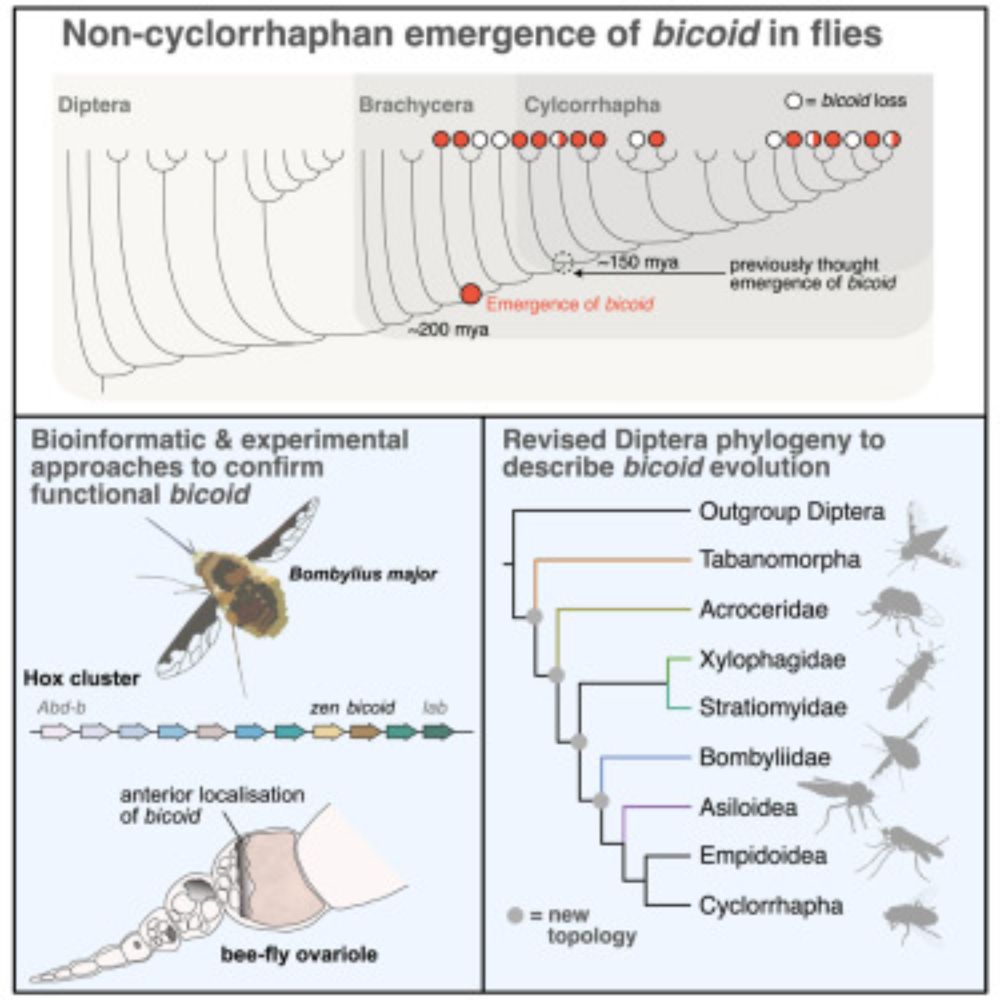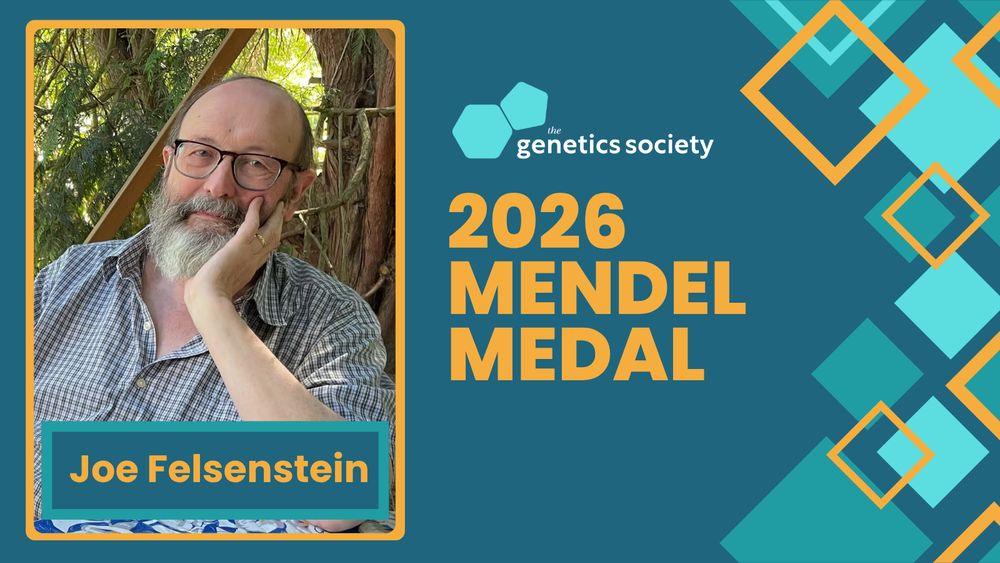Passionate about species formation & persistence in a changing world. 🏃🏻♂️🌍
Committed to mentoring future scientists & engaged citizens. 🎓💡
https://biodiversitysmns.wixsite.com/rpereiralab
We’re launching the Dept. of Biodiversity Monitoring at SMNS!🚀 Using museum & monitoring collections, we study genomic diversity 🧬 and species persistence in a changing world.
by Dr Stephan Spiekman
Tuesday | 25.11.2025 | 16:00
Join the talk in person at the Museum am Löwentor or online: https://t1p.de/sq0m6

We find the fly development gene bicoid is much older than previously thought (~20 million yrs older!) 🪰🧬
To pinpoint its origins we tackled the Diptera phylogeny, providing some resolution (many open questions remain).
🔗 tinyurl.com/2vyuevpy

We find the fly development gene bicoid is much older than previously thought (~20 million yrs older!) 🪰🧬
To pinpoint its origins we tackled the Diptera phylogeny, providing some resolution (many open questions remain).
🔗 tinyurl.com/2vyuevpy
Find out more here: eseb.org/prizes-fundi...

Find out more here: eseb.org/prizes-fundi...
www.science.org/doi/10.1126/...
This study looked at more than 640 canid crania over the past 50,000 years (see the Perspective by Fillios) and found that by the beginning of the Holocene, dogs already displayed extensive variation.

www.science.org/doi/10.1126/...
This study looked at more than 640 canid crania over the past 50,000 years (see the Perspective by Fillios) and found that by the beginning of the Holocene, dogs already displayed extensive variation.


Stringer about whether you and I are different species (n.b. I am a neanderthal). doi.org/10.1093/evol...

Stringer about whether you and I are different species (n.b. I am a neanderthal). doi.org/10.1093/evol...
The emergence and diversification of #dog #morphology | Science www.science.org/doi/10.1126/...

The emergence and diversification of #dog #morphology | Science www.science.org/doi/10.1126/...
apply.interfolio.com/177547
apply.interfolio.com/177547

www.uni-konstanz.de/zukunftskoll...
www.uni-konstanz.de/zukunftskoll...
www.findaphd.com/phds/project...
Please contact Lena by email for informal enquiries.
Common cuckoos parasitize over 100 host species, fueling an evolutionary arms race: hosts are under pressure to detect foreign eggs, while cuckoos refine their mimicry to escape detection. 2/6

Common cuckoos parasitize over 100 host species, fueling an evolutionary arms race: hosts are under pressure to detect foreign eggs, while cuckoos refine their mimicry to escape detection. 2/6
You might think trees have been around for a long time, but sharks have been here even longer!
See how sharks have survived and thrived through all five of Earth’s mass extinction events in this week’s Surprising Science.
You might think trees have been around for a long time, but sharks have been here even longer!
See how sharks have survived and thrived through all five of Earth’s mass extinction events in this week’s Surprising Science.
#AncientDNA
www.biorxiv.org/content/10.1...

#AncientDNA
www.biorxiv.org/content/10.1...


resjournals.onlinelibrary.wiley.com/doi/10.1111/...

resjournals.onlinelibrary.wiley.com/doi/10.1111/...
Out now in Science, my PhD work with @lindymcbr.bsky.social uncovers the ancient origin of the “London Underground mosquito” – one of the most iconic examples of urban adaptation.
🧵(1/n)
@science.org
www.science.org/doi/10.1126/science.ady4515

We are looking for an Assistant Professor in Plant #Biodiversity and #Conservation
universityvacancies.com/trinity-coll...
Deadline: November 14th.

We are looking for an Assistant Professor in Plant #Biodiversity and #Conservation
universityvacancies.com/trinity-coll...
Deadline: November 14th.
Please share widely!
#QueerInSTEM #DisabledInSTEM #BlackInSTEM #WomenInSTEM #CarersInSTEM #AcademicSky #HigherED
Please share widely!
#QueerInSTEM #DisabledInSTEM #BlackInSTEM #WomenInSTEM #CarersInSTEM #AcademicSky #HigherED



